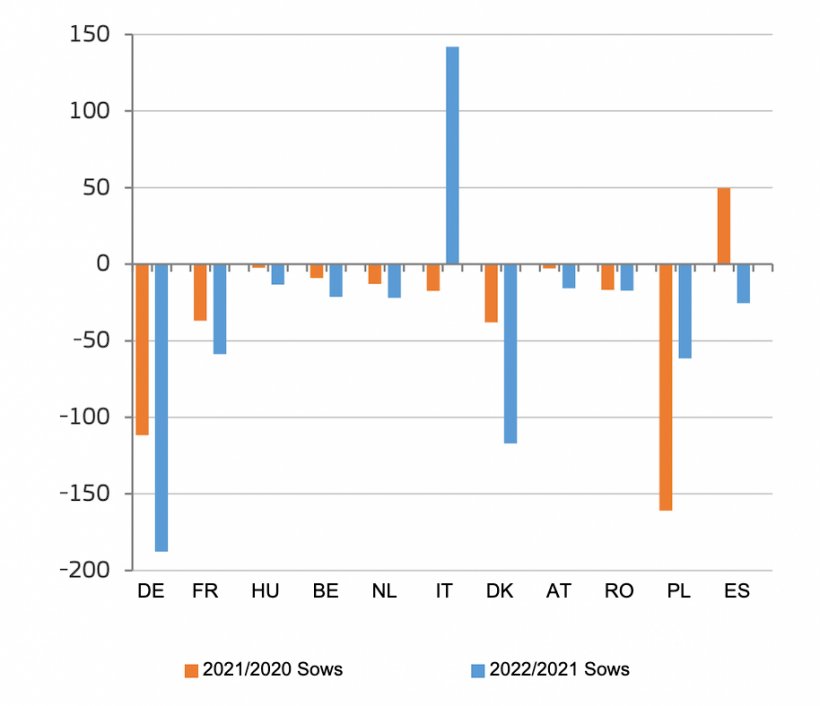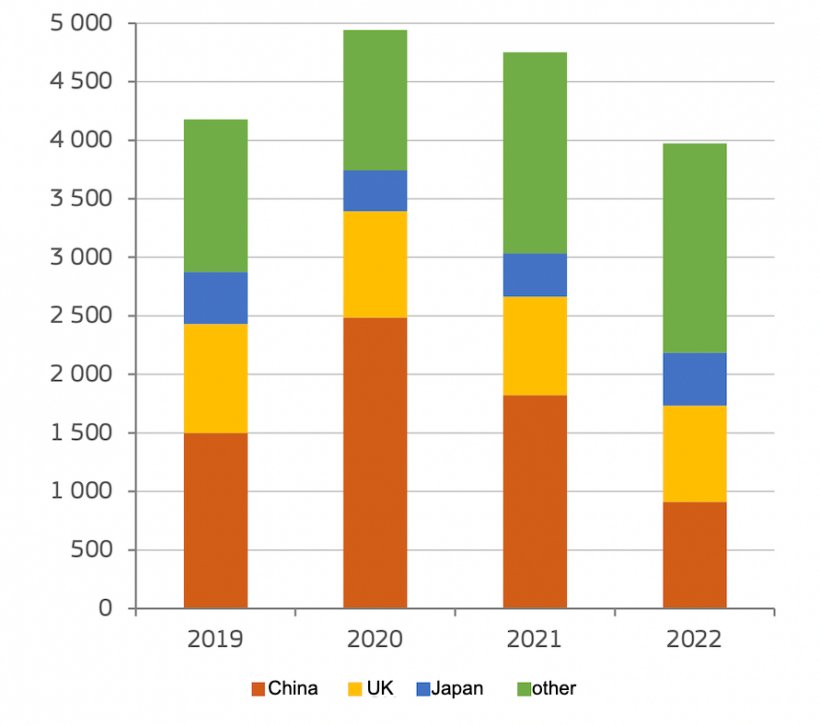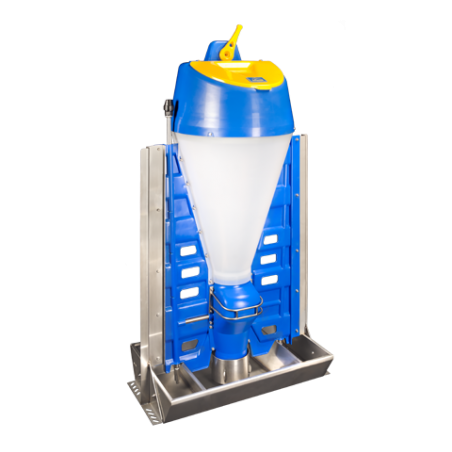EU pigmeat production decreased in the majority of EU Member States and on average by 5.6% in 2022. Important producers such as DE, PL, DK, ES, BE and IT recorded large decreases. According to the December 2022 livestock survey, the number of breeding sows decreased by half a million heads in 2022 (-4.6%), following a decline of 370 000 heads in 2021 (-3.6%). The current stock of fattening pigs is also very low in all categories.

In 2023, the African swine fever situation is assumed not to change dramatically and this will continue to trigger strong responses in affected countries and among trade partners. As feed prices are slowly going down, the main pressure on margins is expected to cool down. This might result as well in slightly higher carcass weights. Overall, EU pigmeat production is expected to decrease further by another 5% in 2023.

Due to tight supply, EU pigmeat prices continue evolving at record levels. This makes EU pigmeat exports relatively less competitive than other exporters in the global market. EU pigmeat exports declined by more than 16% in 2022, mainly coming from a 50% reduction of exports to China, which is not expected to be reverted in 2023. This was compensated partly by diverting exports to other destinations like Japan (+23%), the Philippines (+21%), South Korea (+12%) and Australia (+19%). Overall, EU pigmeat exports may decrease further by 3% in 2023.

EU pigmeat imports from the UK increased by almost 28% in 2022, representing a bit less than 85% of the total EU imports. As production in the UK is expected to decline, there is little potential to increase imports from that side. Therefore, EU pigmeat imports are expected to increase by only 2% in 2023.
Due to the limited supply, EU domestic use decreased by 2.8% in 2022, averaging at 31.8 kg per capita. This would further go down in 2023 by 5.9% and reach its lowest point (around 30 kg per capita on average).
March 30, 2023/ European Commission/ European Union.
https://agriculture.ec.europa.eu









